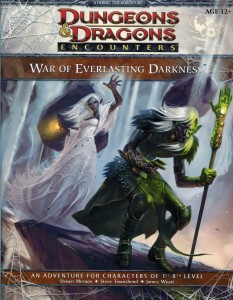While the Dungeon’s Master team enjoys some well-deserved vacation time, we’re breaking out the greatest hits and shining a spotlight on a few of our favourite articles from 2012. We’ve searched for hidden gems that our newer readers might have missed and our long-time readers will enjoy reading again. Enjoy a second look at these greatest hits from Dungeon’s Master.
Two heads are better than one. Yet in D&D the DM almost always flies solo. It’s rare that the DM will ask any of the players for help, especially when it comes to designing encounters. After all, the DM doesn’t want one player knowing where the traps are or what kind of monsters that will attack the party around the next corner. So most DMs go it alone.
This can lead to problems when you have one DM doing all the work for extended periods of time. Most DMs have a certain style. They might use or avoid using some monsters. They might throw in lots of minions. They might overuse traps. The point is that the group may be bored or even sick of having the same DM give them the same things over and over again. My group rotates the DM to help avoid these problems but I know this is not the case for all groups. If you’re stuck with the same DM and you’re not wild about his DMing style what can you do? Insist the DM get help from the rest of the group.
In most groups each participant brings a different specialty to the table. For example in my group we have one player who loves to create new monsters. We’ve learned to draw on this skill when we need something unique (usually a big boss monster). Sure that player will know the monster’s vulnerability or lowest defense, but he’s good at not letting that affect his play. Another player is great at designing traps, so again the DMs will tap him for help to really make the next dungeon deadly.
The point is that DMs shouldn’t feel that they need to do all the heavy lifting by themselves. You’ve got a table full of gaming geeks that are all creative. Let them add their 2 cents to the design of an encounter. You don’t have to use what they provide exactly as they’ve provided it, but you should be open to the wealth of knowledge your gaming group can offer even when they’re just the players.
September 25, 2012, Dungeon’s Master once again presents: Collaborative Dungeon Design.
